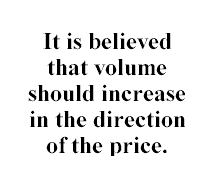This book was a nice trip back to the basics. Solid practice and solid theory behind a lot of Turner's trading advice. I actually wish I had read this book when I was starting out (but I guess they didn't have it back then). Had I, I may have just skipped using OHLC/bar charts altogether. Toni loves candlesticks sand shares her favorite patterns in this book, and that's what I'm going to put here. A few patterns, backed by graphs in the book to hit-them-home. -Enjoy!
SINGLE CANDLE PATTERNS
DOJI
-bears & bulls in deadlock.
-reveals indecision
-usually indicates a shift, or reversal
HAMMER
-may signify downtrend is coming to an end
HANGING MAN
-could signal uptrend is over, but need to verify with following candle
TWO STICK CANDLE PATTERNS
BULLISH ENGULFING PATTERN
BEARISH ENGULFING PATTERN
DARK CLOUD COVER
-appears at top of uptrend
-opens above close of first, then closes low deep in first candle
-indicates a storm is brewing
-opens below, then closes at least half over previous candle
-the greater the second pierces the first, the greater the chance it's a strong reversal
THREE STICK CANDLE PATTERNS
MORNING STAR
EVENING STAR
MORNING DOJI STAR
EVENING DOJI STAR
-Star patterns represent strong and valuable reversal warnings.
-Knowing how to identify strong reversal patterns in the making not only alerts us to potential setups for entries; they also offer efficient profit-taking signals. Because if you are long a stock, and you see a reversal pattern forming that indicates the stock may make a U-turn soon, you can grab your gains quickly, while buyers are keeping the price aloft.
-to qualify for "star" billing, the candlestick should appear at the top (or bottom) of an uptrend (or downtrend), have a short real body, and gap away (open higher in uptrend, or lower in downtrend) from the previous candlestick.
-The co-stars: in the context of an uptrend, the first real body should be long and clear. The third real body should be long and dark, penetrating the real body of the first candle. In a downtrend, the first real body is long and dark; the star appears next. Finally the first real body moves up, well into the first dark real body.
-The Japanese call the first star and evening star and the second a morning star. When the star emerges as a doji, it's an even more powerful warning that a reversal may be impending.
PATTERNS OF INDECISION
NOTES OF CANDLESTICK PATTERNS
-Traditionally, the doji opens and closes at the same price. But if you spot a "near-doji," where the prices are within a few decimal points of each other, it's still a significant signal.
-A doji that appears in a sideways consolidation move, accompanied by other doji and short real bodies, is not a powerful beacon of change. These candles must appear at the top or bottom of a price pattern to emit a strong reversal signal.
-Doji can be viewed as more powerful at stock/market tops, rather than bottoms. This holds especially true when preceded by a long clear candle, such as in the doji evening star pattern. Think: Long, clear real body equals strong bullish opinion. Then, a doji develops. Doji equals indecision by market players to pay a higher price. Result? Possible pullback or profit-taking may soon follow.
-Doji than confirm trend tops or bottoms many times turn into support or resistance areas.
-When a stock in a an uptrend pulls back to support and then forms a doji, it indicates the stock may be ready to turn and resume its uptrend. The same is true of a stock in a downtrend; a rebound to resistance, followed by the formation of a doji, may indicate the stock will drop back to the downside. Notice the operative word here is may. Always wait for the next candle to confirm price direction.
EXAMPLES




















